Value in Time: Better Trading Through Effective Volume
$15.21
| Author(s) | |
|---|---|
| Format |
|
| Pages |
401 |
| Publication Year |
2008 |
In Value in Time, Pascal Willain provides breakthrough new technical analysis tools that show you how to see through market manipulations and become a better, smarter trader. This unique guide contains insights that will take your trading to the next level. This book is therefore about finding out what insiders are doing, what large funds are doing, what traders’ expectations are, and how the equilibrium between supply and demand evolves. It is also about understanding when large funds are moving in and will eventually establish a new price trend, as well as knowing what buying power is necessary to support a trend, what will break trends, and when trends will be broken. In short, it is about reading the markets instead of guessing about them.
Author’s Introduction:
This book, Value in Time is divided in two regular parts, followed by a bonus section. The first part describes in detail the four new tools that I developed in order for each of them to find a solution to a specific problem. The second part integrates the various tools into trading strategies, and I show what works and what does not for either retail players or fund managers. Part Three, the bonus section, shows how to adapt the tools to sector analysis.
- Part One: The Set of Tools That Will Change Technical Analysis: I developed the sets of tools presented in this section because I needed them for my own trading. Each tool addresses a specific issue with only one goal in mind: to better understand the market. I am convinced that these new methods of measuring the market have the power to change technical analysis as we know it today. The industry will be slow to adapt, but in the end, I believe that the tools that provide a better measure of the market forces will prevail.
- Part Two: Trading Strategies: After developing in the previous section a set of new tools that can be used independently, this section shows how these tools can be combined into various trading strategies. These trading strategies are tested against a buy/hold trading method not only in terms of risk/return balance, but also in terms of the total efforts that a trader must invest in order to sort out the best trading opportunities.
- Part Three: The Bonus Section: This part is called a bonus section because it opens the door to the understanding of different facets of trading using the trading tools introduced in Chapters 1 to 4.
Contents:
- Effective Volume: An Open Window into the Market
- Price and Value: The Active Boundaries Indicator
- When Volume Diverges from Price
- Supply and Demand: The Key to Trading
- Performance: The Risk/Return Balance
- Automated Trading Systems
- The Market Is a Two-Way Street: Shorting Strategies
- Market and Sector Analysis
Value in Time: Better Trading Through Effective Volume By Pascal Willain pdf
22 reviews for Value in Time: Better Trading Through Effective Volume
Clear filtersOnly logged in customers who have purchased this product may leave a review.




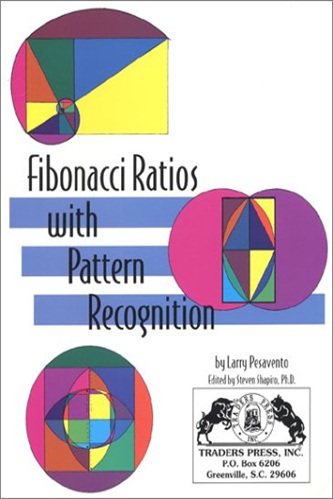
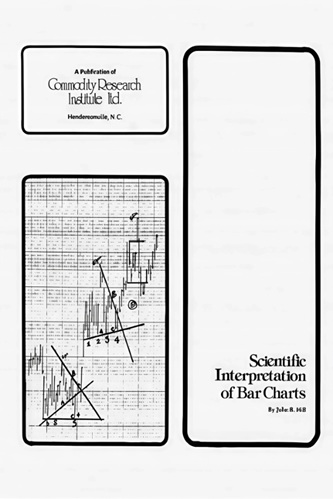
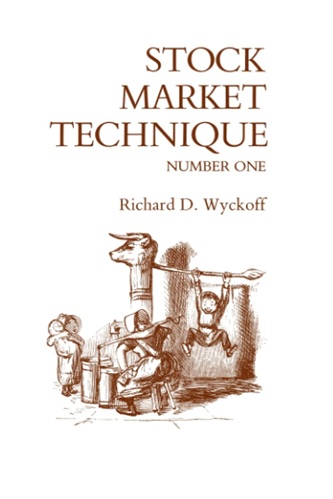
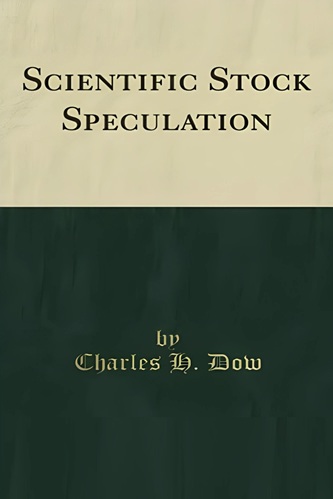
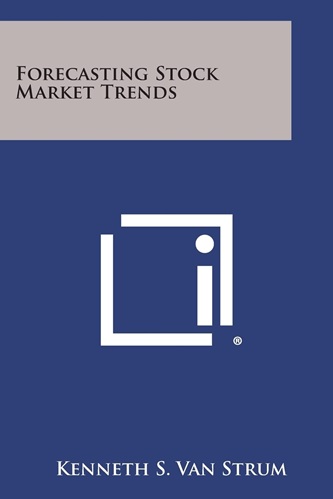
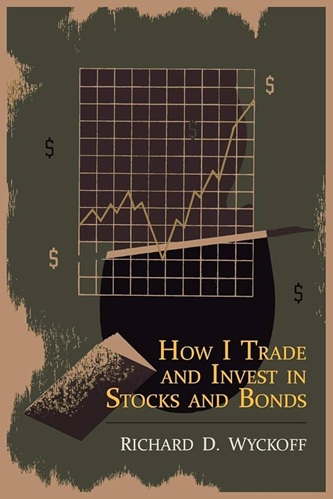
Cesar Ayers (verified owner) –
This book was recommended by Alexander Elder and so I bought it. The book is carefully made and relatively easy to read but the practical usefulness is limited for my computer and mathematical skill level. Anyhow it is useful reading but not to the extent as Elder’s books. Not a waste of money to get some intersting views but not very practical for my srtruggling trading efforts.
Nellie Stokes (verified owner) –
This is one of the most innovative trading methods I have seen
in some time. The advent of complex trading algoritms have made following the “big money” difficult. Pascal Willlains book has
helped in adding a “real-time” rather than a post-mortem approach to
monitoring “large players”.
The approach is unique and this book is a rewarding read for both pro and amateur traders. You will no doubt finding yourself reading this book again and again for valuable insights!
Sincere Enriquez (verified owner) –
Pascal has written a very thorough, analytical work explaining new technical analysis methods, indicators, and techniques he has come up with — most of these are for examining large money trading volume versus small money. He has done this away from the normal “Wall Street” world in Belgium, and has come up with indicators never seen before. Pascal’s engineering background has served him well in applying a “scientific” approach to chart following. Most of the best technical indicators for trading are not widely followed, and it would be advisable to read this in-depth book to “stay ahead of the trading curve”.
Diana Mora (verified owner) –
This book is not just one of those thousands `how to make money’ guides. It starts with Pascal’s basic layman questions and elaborates into the mathematical details, and then goes beyond even to touch on the realm of philosophy of today’s trading and financial society. Dear professional traders and researchers, believe me and read this book. It is so generously full of original brand-new ideas that you can experiment and develop into doctorate papers. But more surprisingly, it is written in such a `down-to-earthly’ way that beginners or even people like me who had never traded until today can be interested and then intrigued into the world of trading.
Arturo Stewart (verified owner) –
One of the very few works that introduce new and fresh methods in TA world too often filled with reworkings of past approaches.
Program based trading is becoming more and more important in the overall exchanged figures and EV is a potential killer application to win the competition in this new framework.
Active Boundaries is a new and powerfull system to objectivelly measure the “psycological” state of a single security as well index composite owner and using it in our trading a great advantage .
The backtesting presented works are very usefull to understand the strenght and weakness of the singles as well combined method.
Bode Parrish (verified owner) –
This was a great book to help fill in a lot of my gaps in understanding the “whys” behind volume and price moves. The author does a very good job covering the reasons behind market moves including why trends exist, supply/demand equilibriums and different boundaries where expectations of share price changes have a higher probability to increase or decrease.
The technical indicators he has developed are based on these ideas and I can’t wait to build them in and test them out in several of the different trading strategies he lays out in his book.
Overall a great book that presents some new ideas and indicators that when understood and used properly will add a lot to technical trading strategies.
Maya Graves (verified owner) –
Falls apart with assumptions of float analysis that may or may not be true. The truth is you don’t know who is cashing in the chips at a given time and presumptuously deciding you’re able to with assurance prove a stock is moving into new hands at a level is rediculous. Nice try though!
If you’re going to make a science out of predicting who did what when or of uncovering commercial activity I think you’re going to have to get alot more specific than what’s in this book.
Austin Valdez (verified owner) –
I agree with earlier reviews that this book is a hidden treasure and worth its weight in gold. I came across Dr Elder’s review on this book by chance while searching for trading books on volume. I was impressed by his glowing review (plus Tim Ord’s review on the back cover) and ordered the book. Since then, other reviewers have rated this book highly as well.
The author certainly does not disappoint. Although the book is not easy to digest (at least for me), this is because he covers new concepts in analysing volume and trends, and new ways to track supply and demand in stocks and sectors. Each chapter is well-written and Willain’s research on effective volume, active boundaries and divergence analysis is insightful. As the new indicators in his book are currently unavailable on most trading platforms, I have been using his free website to access those tools.
Overall, I am very satisfied with my purchase. I hope those who are contemplating to order this book have benefited from my review, as I have from Dr Elder’s. I also appreciate Willain’s sincere efforts to spread the message that new TA tools are required to improve our analysis and trading in the ever-changing market environments.
Kasen Campbell (verified owner) –
Who would have thought that an interesting breakthrough in technical analysis would come from a trader who lives in a small European country wherein the principal language is French? Stock trader Pascal Willain realized that the traditional concept of accumulation/distribution oscillator was incorrectly based upon a uniform volume distribution over different prices. In “Value in Time: Better Trading though Effective Volume” Pascal, in lay terms, presents the accumulation/distribution oscillator corrected for normally distributed volume over different prices. He calls his method Effective Volume. Effective Volume contributes to the unmasking of the smart money, allowing the average stock trader to see the actions of the major market players. And who wants to trade against the major players? Willain’s evidence is both interesting and compelling: the genius is in the simplicity. I suggest that to become a more profitable trader, you should understand the effect of volume on price action. VIT is an excellent contribution to the trading literature in understanding volume.
Karen Clayton (verified owner) –
I’ve been looking forward to the publication of this book for months, ever since reading about the author’s work in Dr. Elder’s book. This book did not disappoint, it is something really rare and special in a couple of respects.
First of all, it offers something that is seldom seen in the world of technical analysis — a way of extracting something new and valuable information from the same price and volume data we’ve all been looking at for years. It’s so clever you wonder why no-one has thought of it before.
In principle, in some ways, the effective volume method reminds me a little of Edwin Land’s Retinex algorithm for image processing, as used by NASA on satellites … you just take the data and divide it into different layers, then compare the layers, and suddenly the picture becomes clearer. The active boundaries approach complements it nicely and is an interesting approach for those who use tools like Bollinger bands, etc.
Secondly, and just as importantly, the author’s approach to sharing his method is highly refreshing. The fact that Mr. Willain is a good guy is the main reason we have access to something like this, which would otherwise go straight to the inner quant rooms at Goldman Sachs for big bucks. He is in favor of sharing the method widely and encourages the formation of a community of traders to be part of the process of improving it. Best of all, as the methods evolve, plugins are being made available for platforms like TradeStation, AmiBroker, etc., for a small contribution, and all contributions are being donated to a foundation that helps handicapped orphans around the world. What a great thing to do with your life, to come up with something like this and make it a contribution, to independent traders and to needy children around the world. Well done.
Ethan Carson (verified owner) –
I have read perhaps 100 books on trading and many authors point out that the proper interpretation of volume with price action is a major part of improving one’s trading results. For me, integrating volume analysis in my short-term trading or longer term investing has been elusive.
One of the author’s innovative tools —- Effective Volume —- makes the interpretation of volume an easier matter. Effective Volume is a tactical tool that allows us to see what large players are doing so we can be more assured that an expected trade direction (up or down) is real.
It should be noted that the author has developed a unique approach to technical analysis and his various tools are innovative and ground breaking. I have limited my comments to only one of his very original tools (Effective Volume) because the recreation of his other tools are not likely by the typical trader / investor, whereas Effective Volume might very well be.
So, until various platforms offer the author’s tools (which I hope will be soon), we need to fend for ourselves. The detailed descriptions, explanations and examples of the wonderful Effective Volume tool make it feasible for some traders / investors to duplicate this tool themselves.
What I particularly appreciate is the author suggesting specific trading rules to be used with Effective Volume, as well as describing the limitations to blindly following this or any other indicator for that matter. Adding this tool and the author’s suggested rules to whatever arsenal of technical analysis you already use is very likely to improve your trading.
There are many nuggets of wisdom and the author’s personal rules for trading throughout the book, that make this book a rare gem, even if none of the revolutionary tools are used by the reader.
Boston Montoya (verified owner) –
The author introduced his “Effective Volume” theory in “Entries & Exits” by A. Elder. Since that time, I have been fascinated by the concept and was able to implemented it very profitably when I had the time to use it. Data gathering (I use Opentick), analysis, charting, and reporting (I use Excel/VBA) is not an easy task for the casual user who is trying to implement this theory. No trading platform that I know of has the solution implemented – I am sure that will change soon. In addition, there are other concepts such as “Active Boundaries”, volume & price divergence,and supply/demand analysis that truly puts the reader in a treasure hunt mode that is rewarded by finding more nuggets every time you go through the material again. Make no mistake about it; you will have to read and re-read some of the concepts numerious times to understand/appreciate the depth of knowldge/research put in this seminal work. Even with a software engineering background I was challenged with the implementation of some of the concepts in the book and believe that the author can do a tremendous service to his readers by making available (even at an extra charge) a software implementation of his theory. Those of you who don’t have the expertise to code the concepts, you will still benefit from the book by understanding the microstrucure of the market and what goes behind the scene in price manipulation and deception. Those discussions/descriptions in the book are done in a very easy and enjoyable way that makes the book worth its price in gold. I hope that you will enjoy this book as much as I did. Good luck.
Kamryn Frost (verified owner) –
The author uses inexpensive off-the-shelf software to slice each trading day of a stock into one-minute segments. He finds the average one-minute volume for the day and separates the minutes into those with above or below average volume. In each group, he adds up the volume of minutes with rising prices and subtracts the volume of minutes with falling prices. This gives him two cumulative volume lines: one for the minutes with above average and the other for below average volume. He named them Large and Small Effective Volume.
The minutes with above average volume reflect the impact of the big money and often have predictive value. When you find a condition in which the big money starts pushing up a stock, while the small money remains negative or neutral, an upside reversal is in the cards. When the big money starts pushing the stock down while the small money is flat or buying, a downside reversal is more likely.
The author introduces another key concept which he calls Active Boundaries. When the returns from a stock over a period of time reach their upper boundary, the expectations for a further rise diminish and a downside reversal is more likely. When a stock declines and hits its lower Active Boundary, bullish expectations become high and the stock has a greater probability of an upside reversal. Numerous charts show how to catch reversals using these concepts.
In addition to Effective Volume and Active Boundaries the author describes several other concepts. He has a very rare ability to stand apart of the crowd, to question accepted concepts, and to come up with new ideas.
In the interest of full disclosure: I met Pascal a couple of years ago while working on my book Entries & Exits (John Wiley & Sons, 2005), which includes a chapter on his approach.
During the past year I have been receiving Pascal’s analytic emails in which he shares his research into current markets. After you read this book, I suggest you write to Pascal and ask to be added to his mailing list!
I expect the concepts of Effective Volume, Active Boundaries, and others in this book to become accepted by many serious traders. As always, the early adopters will reap the greatest rewards.
Tiana Bernal (verified owner) –
a little complex but a good book to read if you really wish to know which way the masses are running.
Taylor Morse (verified owner) –
Pascal Willain has created the first truly unique way to analyze institutional buying and selling patterns of stocks since perhaps the invention of the stock chart. We are lucky that Pascal is willing to share his techniques. This is a difficult book to read because every page involves something brand new, never seen before. So reserve more than a weekend to read this book. Then go join the community by finding his website where he shares even more every day.
Simone Zuniga (verified owner) –
pascal talks about classifing the volume to two types large players and small players using a script and intraday data, this approach is described in details in his book, the method is really new for traders and is one of a kind, for people interested in volume trading this is a must have. the script you can get from his website for a small donation i personally have played with it for some time and they do give a market insight that for sure………. will not always ! the reason i gave it 3 stars is when it comes to trading as any other methods it has it limitation. i would defiantly like to have it in my trading software but would i relay on it? i am not sure, i see it as a good insight information which can be used from time to time but i don’t believe i would based my trading decision purely on it.
Leona Saunders (verified owner) –
This is the the only book that discover what is going on in the backstage of the market. Through the different indicators described in the book we can clearly see what ‘smart money’ are doing. The book is not easy to read. You will have to read it few times to fully get the described concepts.
Almost all the ideas described by Pascal are possible to implement in your own trade platform. I said almost as a one of the indicator (Supply Analysis Tool) was left in the dark. You get only the idea what it is about but I think that hard thinking person can discover the mystery behind it.
Overall this the best book about how the market works described in a very technical way.
Dario Hampton (verified owner) –
I purchased this title on the assumption that it will offer new trading strategies. However, it offers nothing new, some new approaches that I did not find helpful or practical. Fro example, it analyses smart volume by looking at each trading minute in the trading day. I find this approach unpractical ( to calculate minute by minute volume) and I am not sure the result will be different from what an automated system can already do.
Overall same ideas as the ones you can find any beginner’s trading texts. definitely not worth the price.
Addison McBride (verified owner) –
Just like Wycoff, Arms, Sipley, Cottle, Murphy, O’Neil, Pring, Connors, McMillan, Dr. Elder, even Cramer(and a dozen others), you get something worthwhile and significant, plus an upgrade to Wycoff tape reading work. Mr. Pascal Willain spent a major chunk of time and energy on this to get it up and running. His subscription service(awesome support service) keeps you aware of volumes and up to speed, and he allows probing questions to enhance your perceptions for success, even in down(bear and consolidating) markets.
I have seen many times in his service, where Institutions kept price under control while accumulating shares, then allowed an explosion in the stock price. Twice I saw the charts, and heard one of the company mgrs. on CNBC at the same time the price started going ballistic (fast).
Sometimes a stock can move with just confidence statements from a trusted “expert”.
Pascal is an honest, caring person in his e-mails, and sincerely goes the extra mile to help you learn about his tools! I admire him and his “ULTRA EXPERIENCED & BRILLIANT TEAM of friends who
keep the daily e-mails at such a high precision of awareness level. His services are as powerful as the book that builds the foundations of understanding about the applications of his
new and unique tools. (Obviously, several institutions have equivalent tools that they’ve had custom built for $???,???. plus ? dollars, and we will never get to hear about unless we’re best friends to the team of programming experts who are probably sworn to secrecy! GS 1.8 bill Q3? profits. How else, without some form of EV/AB/TEV/++)
This is worth the time and trouble to buy and read 4-6 times till it sinks in, you’ll be a few
Zaria Gonzalez (verified owner) –
I read this the week it was released. It’s taken me a long time to figure out how to review this book. I read it, slowly, twice. It is not an easy read, and only experienced traders should even attempt to pick this book up. But there are some very interesting concepts and the author is obviously a very thoughtful and creative follower of the markets.
BUT, and its a big but…this book’s ideas are very time intensive and technically challenging to implement and may not be possible with your software platform or data-feed. So be prepared to spend many hours reading, programming and testing these ideas if they appeal to an ultra-short time frame trader.
5 STARS for original thinking and sharing with the rest of us, but 3 STARS for practical use for the majority of traders, so I’ll average it out to 4 stars.
Nalani Ruiz (verified owner) –
I found this book was hard to follow, it’s very analytical, and the examples he uses (at least as far as I got in the book) are hard to follow. I tried going through a couple of chapters and hope the next ones will indeed be more narrative as some other comments said it would be, but they weren’t. I think the book is good for someone that has a very analytical approach to trading, and has time/resources to program this into some software in order to use it. I also thought that the author has no possible way of identifying insiders from small players, since he mentioned that large institutions DO fragment their orders into very small ones, so who’s to say which participants are making these trades??
Eithan Small (verified owner) –
This book contains a large amount of original work by Pascal Willain, which definitely has added depth to my trading knowledge. The author has gone beyond many of the typical topics in technical analysis books, avoiding discussion of traditional chart patterns and moving averages. This book is not written like a textbook, but is presented in a conversational tone. The style makes is easily accessible and interesting to read.
The main topic of the book, Effective Volume, is a straightforward and logical technical study that can be programmed into many available trading platforms. It can be used to try to identify accumulation/distribution by institutional players, which is often carefully hidden through various means. The analysis is clearly presented and easy to understand.
The other major technique presented in the book, Active Boundaries, is a very important topic because it focuses on an often overlooked topic : time. Using the techniques described here has also inspired me to create some related studies of my own, which have been very useful in identifying good trades and opportunities. Overall, this is one of the top technical analysis books on my bookshelf, primarily because it contains a lot of non-traditional original work by Mr. Willain. I would recommend it to anyone who wants to expand the scope of their trading analysis.